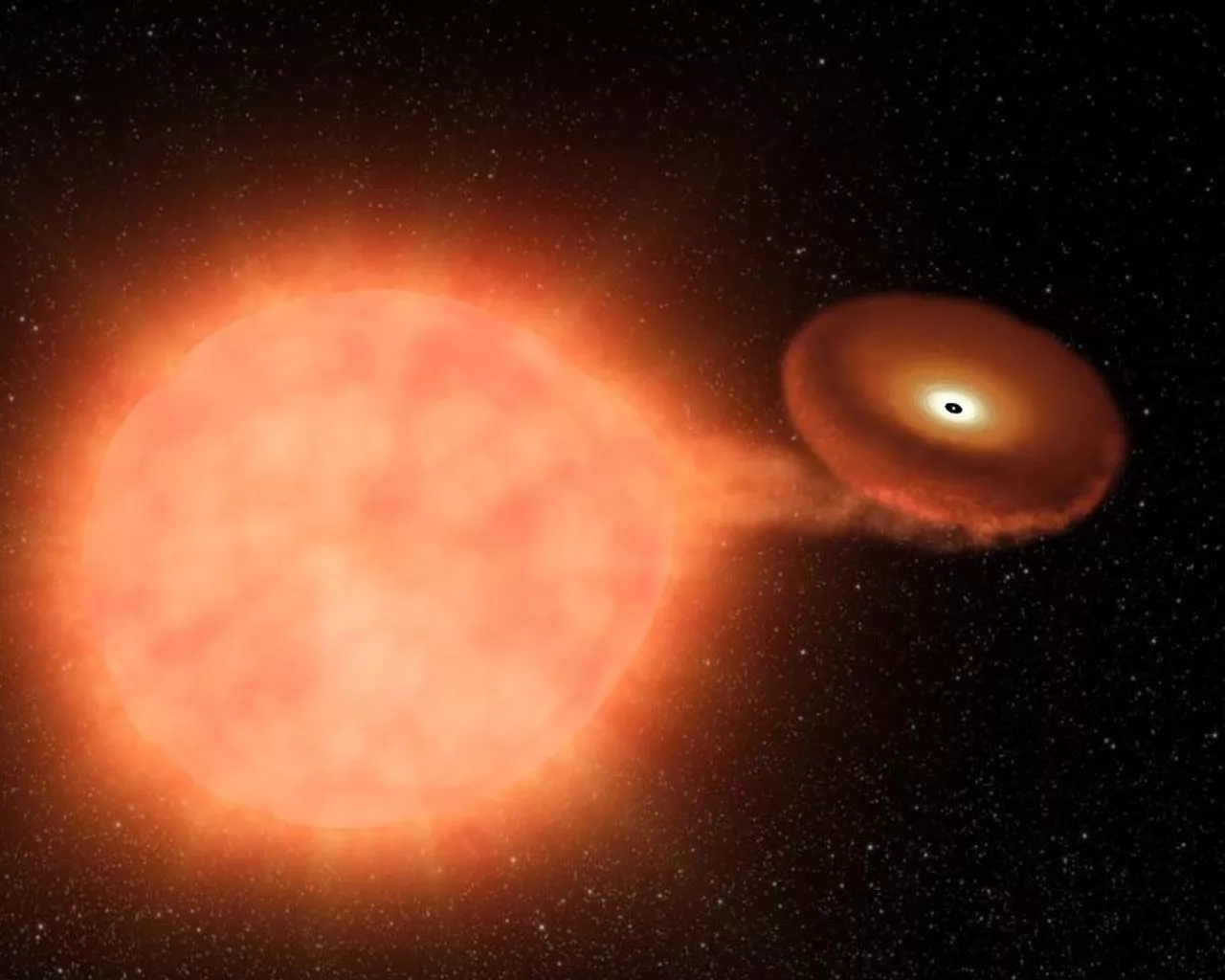Mark your calendars because sometime around 2083 a star as bright as Sirius will suddenly appear in the night sky. Based on 130 years of telescopic photographs, astronomers Bradley E. Schaefer, Juhan Frank, and Manos Chatzopoulos, with the Louisiana State University Department of Physics & Astronomy, have concluded that the binary star V Sagittae (V Sge), located 1,100 light-years away in the constellation Sagitta, will go nova as the main star is devoured by its white dwarf companion.
At the moment, V Sge is nothing much to look at. With a variable brightness that only reaches a magnitude of about 9.6, it's barely visible with mid-sized telescopes and not at all with the naked eye. However, a study of photographs of the star collected since 1890 show that the star pair increased in brightness tenfold or 2.5 magnitudes between the early 1890s and the last decade.
This is significant because V Sge is an unusually extreme example of a Cataclysmic Variable (CV). These are star systems made up of two or more stars where a normal star is in a binary orbit around a white dwarf. Over time, the gravitational force of the white dwarf star draws in the mass of the normal star, which collects on the white dwarf's surface.
According to Schaefer and Frank, V Sge is 3.9 times as massive as its white dwarf companion and is 100 times more luminous than any other known CV. This means that it is generating a powerful solar wind that marks the start of the star pair spiraling into one another before going nova and dying.
"We now have a strong prediction for the future of V Sge," says Schaefer, LSU Department of Physics & Astronomy. “Over the next few decades, the star will brighten rapidly. Around the year 2083, its accretion rate will rise catastrophically, spilling mass at incredibly high rates onto the white dwarf, with this material blazing away. In the final days of this death-spiral, all of the mass from the companion star will fall onto the white dwarf, creating a super-massive wind from the merging star, appearing as bright as Sirius, possibly even as bright as Venus.
"In anticipation of this fast decaying of the orbit, the fate of V Sge is sealed. The critical and simple physics are derived from V Sge having the companion star being much more massive than the white dwarf star, so forcing the rate of mass transfer to rise exponentially. Anticipating the next few decades, V Sge will in-spiral at a rapid pace with increasing brightness. Inevitably, this in-spiral will climax with the majority of the gas in the normal star falling onto the white dwarf, all within the final weeks and days. This falling mass will release a tremendous amount of gravitational potential energy, driving a stellar wind as never before seen, and raise the system luminosity to just short of that of supernovae at its peak."
When V Sge reaches its last days, it will grow in brightness over a month as the two stars merge with one another, and at peak brightness it is predicted to become the brightest star in the Milky Way. In the end, the two stars will form one star consisting of a degenerate white dwarf core topped by a hydrogen-burning layer and a large hydrogen gas envelope. Though calculations estimate the event will occur around 2083, the lack of precise data means that there is a margin of error of ±16 years, so it could occur as early as 2067 or as late as 2099.
"Thus, V Sge will appear startlingly bright in the night sky," says Schaefer. “This is substantially brighter than the all-time brightest known nova (at -0.5) just over a century ago, and the last time any 'guest star' appeared brighter was Kepler's Supernova in the year 1604. Now people the world over can know that they will see a wondrous guest star shining as the brightest in the sky for a month or so, being pointed at by the Arrow just below Cygnus, the Swan."
Source: Louisiana State University





